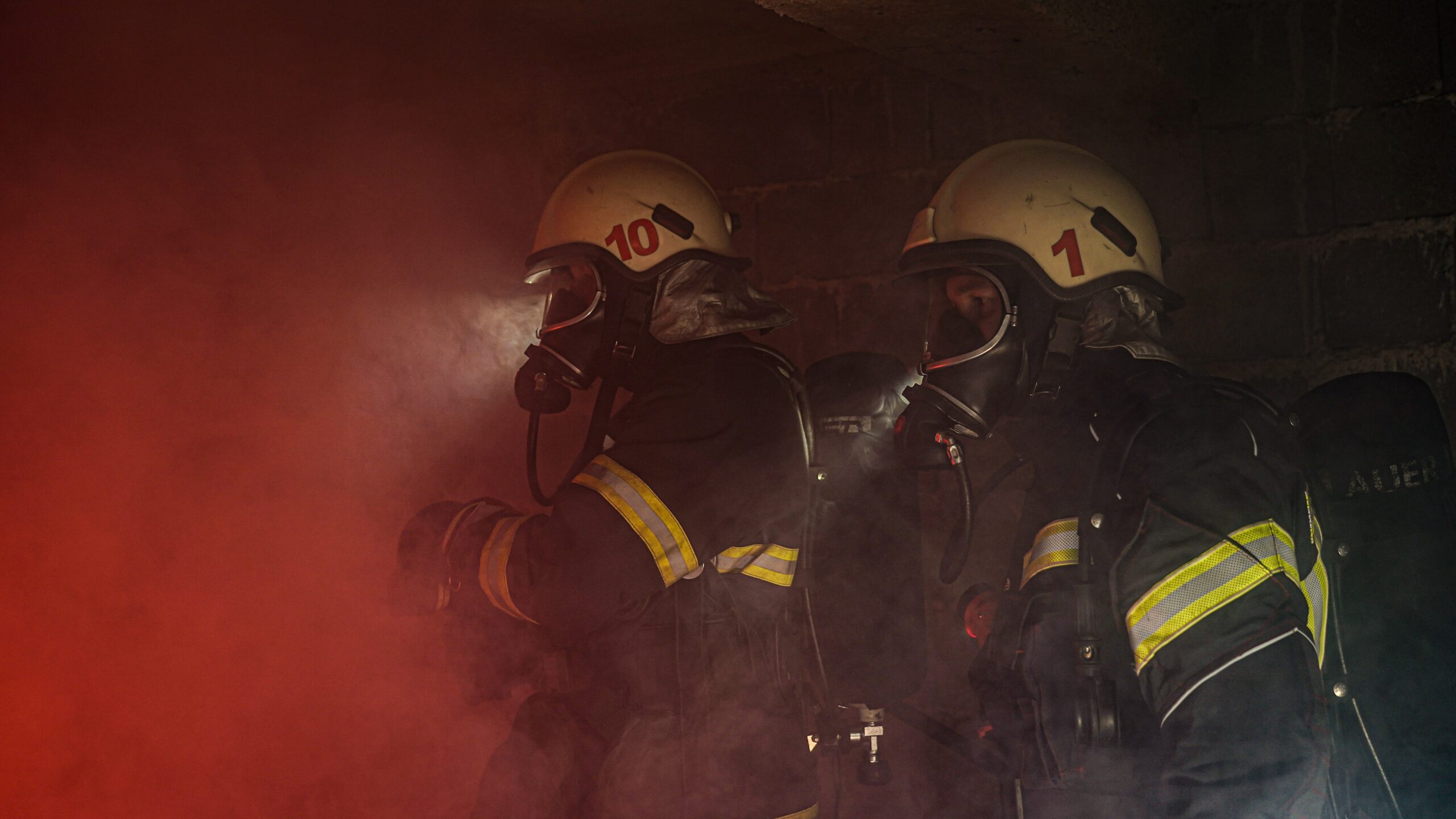Fire Marshal Responsibilities: Everything You Need To Know

By law, every workplace must have a designated fire marshal or fire warden. There are certain rules and regulations regarding how many fire marshals each workplace needs and what the exact responsibilities of the fire marshal are. This guide will explore what a fire marshal is, what they do and where to access fire marshal training.
What Is A Fire Marshal?
A fire marshal is a person who takes responsibility for reducing the risk of a fire happening, and guides people to safety if a fire does start. Although many people think the main duty of a fire marshal is to successfully evacuate people from a building that is on fire, the primary role of a fire marshal is to prevent a fire from happening at all.
The Regulatory Reform (Fire Safety) Order 2005 sets out that anyone who has control over a building, for example an owner or landlord, must take reasonable steps to ensure fire safety. For a business setting, this means appointing a fire marshal. This is most often an employee who has completed fire marshal training. This training will detail the responsibilities of a fire marshal, including the steps to take to prevent a fire and what to do during an evacuation.

IS A FIRE MARSHAL DIFFERENT TO A FIRE WARDEN?
A fire marshal and a fire warden are the same thing. The two terms can be used interchangeably and there is no difference in their meaning. The main point here is that no matter which term you prefer to use, fire marshal and fire warden responsibilities are exactly the same.
Fire Marshal Responsibilities
A fire warden has six main responsibilities that help them stop a fire from happening and get people to safety if one does. The six responsibilities of a fire warden are:
- Assess any risks or hazards that could cause a fire. This may involve carrying out a fire risk assessment.
- Identifying and reporting fire hazards, such as faulty wires, old electrical equipment, or excess clutter.
- Taking the right course of action if a fire breaks out, for example setting off the alarms and doing a headcount.
- Giving first aid where necessary to anyone injured by either the fire or during the evacuation.
- Fighting the fire and using a fire extinguisher if it is safe to do so.
- Organising and carrying out a safe evacuation by guiding people to fire escape routes and having a designated meeting place.
In order to carry out these fire marshal responsibilities, the fire warden will have smaller tasks to perform to both prevent a fire and to aid a safe evacuation. For example, a fire warden working in a kitchen would likely have to perform more functions day-to-day than a fire warden working in a gym.
Fire Marshal Responsibilities For Preventing A Fire
To prevent a fire, there are several measures a fire marshal can take. These can be daily, weekly, monthly or annual tasks that help in ensuring a fire does not break out.
- Checking fire escape routes
- Checking fire escape signs
- Updating risk assessments
- Completing method statements
- Removing hazards
- Maintaining fire extinguishers
- Organising fire drills
- Checking fire alarms
- Completing fire safety inductions for new staff
- Updating existing staff on any changes to fire safety procedures
The responsibilities of a fire marshal also cover identifying any people who may be at a particular risk in the event of a fire. This includes the elderly or anyone with a disability who may not be able to access fire escapes as easily.
Fire marshals should regularly assess and evaluate their surroundings to make sure they have taken every possible precaution to prevent a fire. This is set out in the Government guide to making your premises safe from fire.
Depending on the size of the premises, you may need multiple fire marshals to ensure the safety of everyone in the workplace. This is particularly relevant in large businesses or those where staff move around frequently. Warehousing, manufacturing and construction are some such industries where you may need multiple fire wardens and site-specific risk assessments and documentation.
Fire Marshal Responsibilities In An Emergency
If, despite the fire marshal’s best efforts, a fire does break out. A fire marshal should:
- Notify the emergency services
- Help any at-risk people
- Complete a headcount to make sure everyone has been evacuated
- Stop anyone re-entering the building
- If safe to do so, take reasonable action to put out or reduce the spread of fire.

If a fire does occur, it can be a fraught experience; some people may panic and forget where the fire escape routes are or what they are supposed to do. This is why a workplace needs a fire warden to act as a competent person, and coordinate an evacuation, remain calm and keep everyone safe.
A fire marshal is responsible for making sure exit routes are well-planned and that staff are aware of where they should go in case of a fire. They are not responsible for getting every individual out of the building themselves and should not go back into the building to retrieve anyone who is missing. This is the job of the emergency services.
A fire warden might also complete an accident investigation report afterwards to establish what went wrong and what could be done better. This protects staff and ensures there is a log of the incident.
How Many Fire Marshals Do I Need?
Depending on the size of the premises, you may need multiple fire marshals. The actual number will vary according to the building itself and the number of people that may be in the building should a fire break out. A school, for example, can have thousands of people on the premises, and will require more fire wardens than a local restaurant.
For newer buildings or those considered to be low risk, one fire marshal to 50 people would be sufficient. For older buildings, or those where fire could spread quickly, you will need more fire marshals. This level of detail is determined by a fire risk assessment. It is also covered during a fire marshal training course.
Fire Marshal Training
The person responsible for the building is in charge of appointing a fire marshal. A fire marshal is then responsible for specific tasks relating to fire prevention and evacuation. Once this person has been appointed, they must undertake fire marshal training.
A fire marshal training course will cover basic fire training but then go into more rigorous detail. Some of the topics covered include:
- Understanding how fires spread
- Current fire legislation
- How to use fire safety equipment
- Fire risk assessments
- Managing people in a fire
- Building safety features
At the end of the course, participants are awarded a certificate to confirm that they have undertaken the necessary training and are knowledgeable in all of the fire warden responsibilities.
Fire Marshal Training With Rhino Safety
As experts in workplace health and safety, we deliver a range of training courses, including basic fire safety and fire marshal training. Our courses can be either in-person or online to suit the needs of your business. Contact us at Rhino Safety today to find out how we can help with fire marshal training or to learn more about any of our other health and safety services.
